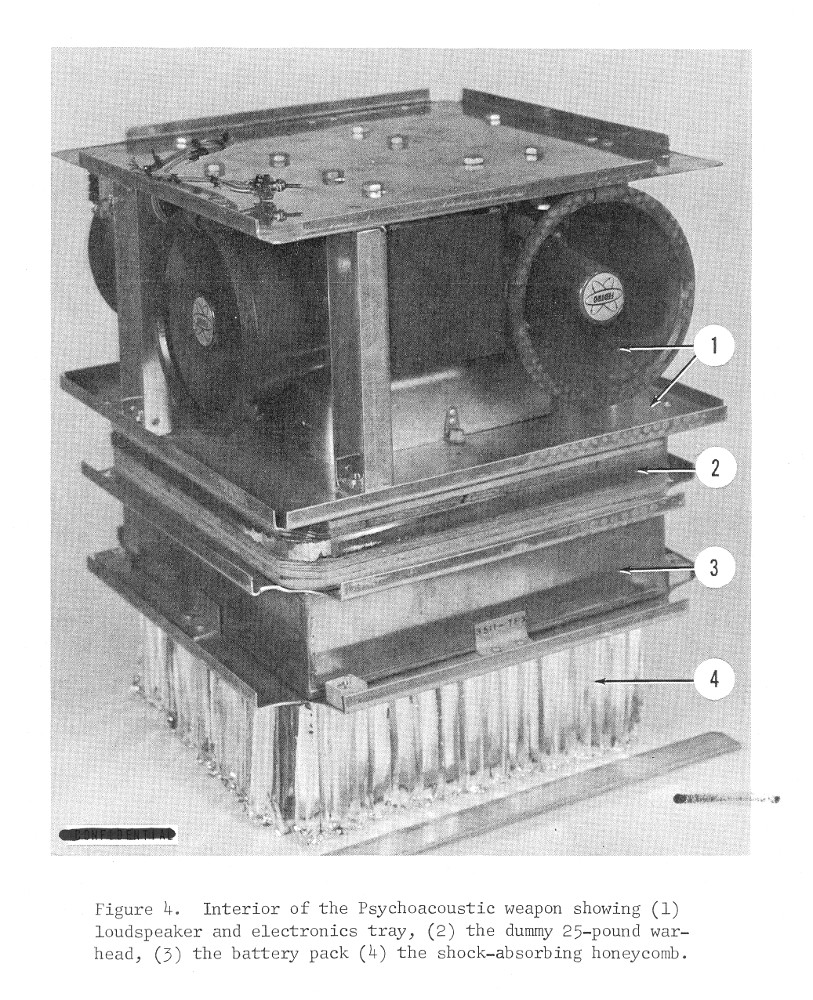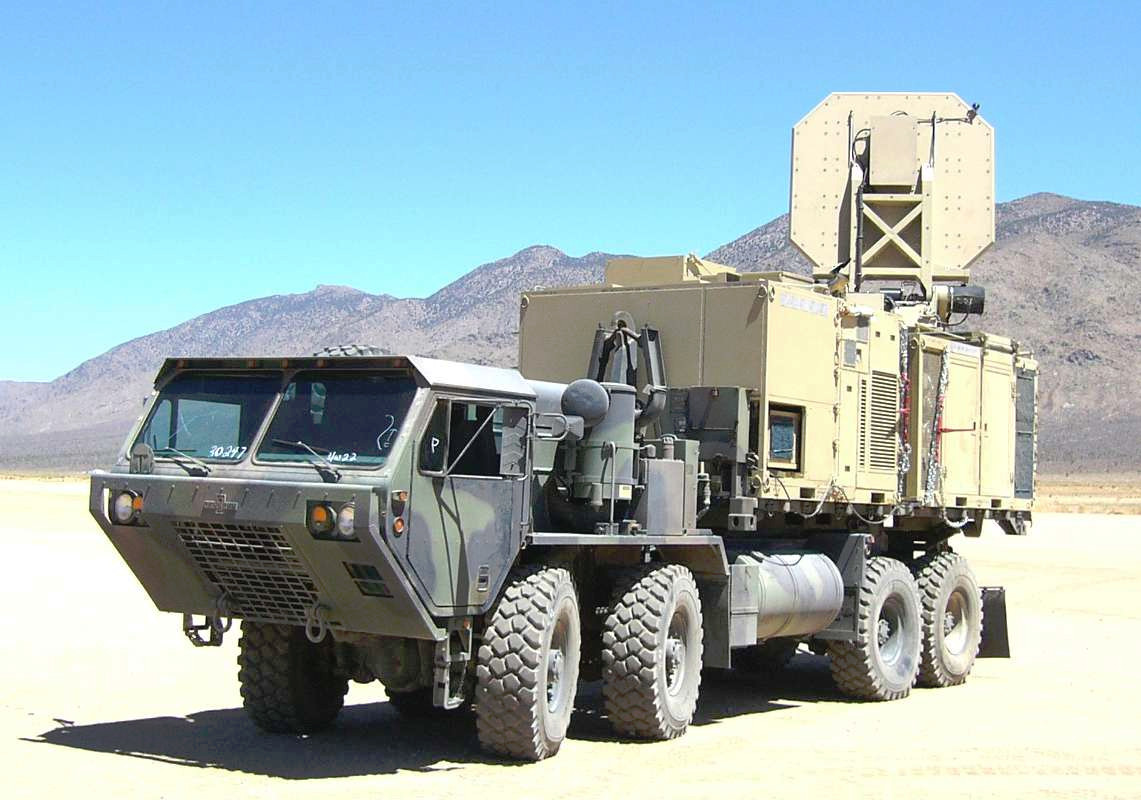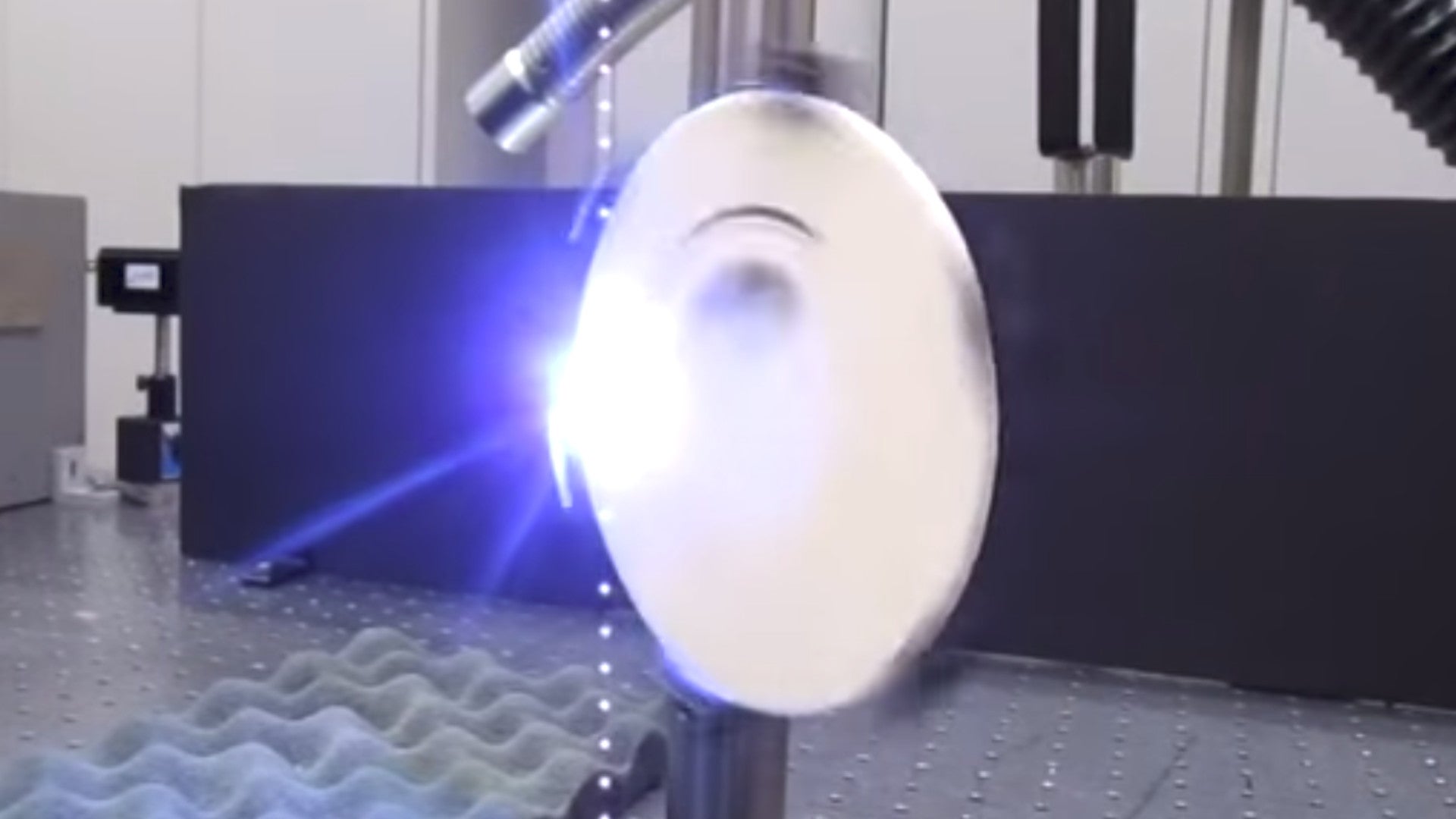A mob of protesters gathers outside an American embassy in a foreign country, chanting slogans and waving signs and banners, but militants eventually begin to infiltrate the crowd with weapons. Suddenly some of those individuals begin to hear strange, disembodied voices and see bright lights that come seemingly from nowhere, while others duck for cover from phantom machine gun fire or begin to feel a burning sensation. Eventually a voice begins to explain the situation to nearby civilians and advises them to disperse.
This may sound like an odd cross between a near-future war movie and a horror flick, but it’s a very real concept the Pentagon’s central less-than-lethal weapon office, called the Joint Non-Lethal Weapons Directorate (JNLWD), is working on. This specific project, called Non-Lethal Laser Induced Plasma Effects (NL LIPE), aims to have a perfected a beam that can produce audible instructions and commands to an individual or a small group of people within three years and maybe have a practical prototype system ready in five years.
“I’m trying to get a little plasma ball to speak to you,” David Law, head of the JNLWD’s technology division, told Military Times earlier in March 2018 at an exhibition focused on directed energy systems in Washington, D.C. “We’re this close to getting it to speak to us,” he added to Defense One on the sidelines of the same event.
You can watch demonstrations of the experimental systems below. In the final experiment, which begins at 5:40 in the video’s runtime, you can eventually hear what sounds like a broken radio transmission.

But it’s not actually transmitting a recording or relaying an actual person talking at all. What’s actually happening is an interaction between two lasers.
The first is what’s known as a femtosecond laser, which shoots out pulses of amplified light at an extremely high speed. This creates a ball of plasma, a field of highly electrified gas with unique properties distinct from other states of matter – gasses, liquids, and solids.
Those properties mean that U.S. military scientists can hit the field with a second small nanolaser to create different effects, such as light, sounds, and even the release of thermal energy. They say they’re working on developing ways to tune the system to produce specific audio wavelengths, which in turn will allow them to effectively artificially generate a human voice. It can also generate loud sounds – more than 140 decibels in some cases, the same as hearing a typical gunshot from 100 feet away – that could be distracting or painfully disorienting.
A practical system could potentially replace a host of less-than-lethal systems American forces already have available to them. These include visible lasers that can temporarily blind or disorient individuals, so-called “acoustic hailing devices” that focus sound waves at long range to convey messages or pump out painfully loud noise, and microwave active denial system “pain rays” that can chase people away with an unbearable burning sensation.

A plasma-based system could have added benefits in terms of range and safety over those existing devices, too. Theoretically, a practical device could hit a target with a less-than-lethal effect tens of miles away, exponentially greater than the aforementioned options.
“Now I can put it anywhere. Range doesn’t make any difference,” Law told Military Times. “Range is a function of the optics. The bigger the mirrors, the farther the range,” he explained to Defense One.
The arrangement also only creates an effect where the two lasers converge, meaning that there’s no broad range in between where the effects are the same. This, in turn, means that it’s less likely to inadvertently hit friendly troops or other bystanders situated between it and that actual target.
These features might potentially open up the possibility of applying the same principles to other roles, as well, such as long-range, covert communication. The potential for lasers by themselves to transmit information across long distances is already well established and has been put into practice, especially in space-based applications.
The video below offers a more detailed introduction into optical communications systems using lasers on satellites.

A practical plasma system would also have definite potential as psychological warfare tool, especially if fitted to an unmanned aircraft that could potentially provide this capability discreetly or even in denied areas. Both the U.S. military and the U.S. Intelligence Community would undoubtedly love to have the ability to direct disconcerting or false messages out of thin air at the enemy or even a particular individual, such as a terrorist leader. They might mistake the experience for some sort of divine intervention or a deteriorating mental condition.
There’s some precedent for this within the U.S. military already, too. during the Vietnam War, the U.S. Air Force actually experimented with air-dropped “psychoacoustic weapons,” which were speaker boxes with recordings to either spew propaganda messages or terrifying or distracting noises. These “Screeming Meemies” never progressed beyond the prototype stage.

Depending on how wide a range of effects scientists can create with the plasma, a similar system might be able to produce a potentially lethal or otherwise damaging effect at extended ranges, too. There are already laser-based defense systems for ground vehicles and aircraft that either destroy optics on sensor systems or blind the seekers on incoming missiles.
The concept is still very much in the experimental phase, though, and there are significant issues that could make it difficult to employ it in real-world situations. Most importantly, the footage of the experiments shows that the device will still likely need a straight line between it and the target.
When the scientists place an object in the lasers’ path it results in the light and sound pinging off its surface. The physical makeup of the target, including just its color, can also produce different results, which might lead to problems in devising a practical non-lethal weapon, as well.
These kinds of variables are among the factors that have effectively prevented the U.S. military from employing its pain rays, even though American officials insist they’re perfectly safe. Though it’s not clear how realistic a risk it actually is, there is definitely a concern that if someone were to turn the power too far on an active denial system, it might result in permanent injuries. Critics have similarly questioned whether or not long-range acoustic devices and dazzling lasers might actually have long term effects.

From both practical and public relations perspectives, being able to finely and precisely control the effects will be essential if the U.S. military wants to transition the system from a laboratory experiment into a realistic tool. Scientists and engineers will also have to build a complete system that is small enough to be readily deployable and rugged enough to survive real world conditions.
The underlying science is sound, though, and it’s very possible that American troops might find themselves literally firing off balls of plasma full of warnings, instructions, among other effects, to protesters, other forces, or even enemy personnel sometime in the next decade.
Contact the author: jtrevithickpr@gmail.com
